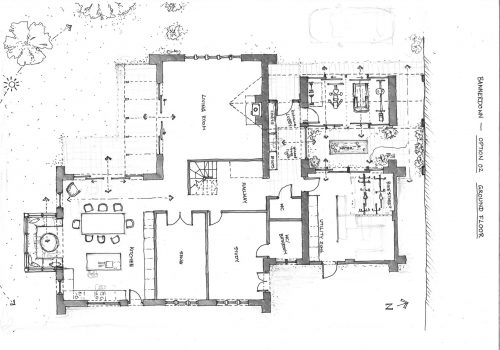When embarking on an architectural project, contracts are drawn up to outline the scope of work, schedule, and responsibilities. However, during the course of a project, changes may become necessary, leading to the need for change orders.
What is a Change Order?
A change order is a written agreement that documents any modifications to the original scope of work. It specifies how these changes will impact the schedule and cost of the project. While change orders can be uncomfortable to issue, they are a natural part of the architectural business. Unforeseen circumstances, client requests, or errors in the plans can all necessitate change orders.

When Do Construction Change Orders Typically Occur?
Change orders should be issued whenever additional information requires changes or additions outside the original scope of work. While most change orders involve an increase in the scope, they can also be used for decreasing the scope. Change orders may arise due to client requests, unexpected site conditions, errors in plans, or changes in design.
To avoid disputes, it is essential to clarify expectations before work commences. Contracts should clearly outline the process for change orders, including calculation of costs, schedule changes, and approval procedures. Including a list of work items not covered in the scope can manage client expectations and potentially avoid future change orders.
When You Sense a Change Order
In many cases, architects can anticipate the need for change orders. Proactive communication about potential changes allows all parties to prepare for them. Providing a change order template to all stakeholders ensures consistency and smooths the process when changes arise.
Approval of change orders should involve authorized parties to avoid issues later. Additionally, consider how the change order will impact subcontractors’ work and collaborate with them to assess the effects on the project.
What to Include in a Change Order
A comprehensive change order should include crucial information such as contract and project details, a clear description of the change, a comparison with the original contract, a breakdown of costs, and any schedule adjustments.
Submission and Approval
Change orders should be agreed upon and signed by both the architect and the owner (or owner’s representative). Setting a timeframe for owner response in the contract (typically around 15 days) ensures prompt review and approval.
Protecting Your Profit
Change orders play a crucial role in communicating the reasons for cost increases to clients. With a clear change order process, clients are more likely to understand and approve these changes. Written change orders protect both the client and the architect, ensuring that no work proceeds without approval.
Change Order Disagreements
In the case of change order disputes, carefully review the contract, project documents, and actions taken during the project to assess the validity of the change order. Always be prepared to make allowances or sacrifices when necessary to resolve disputes amicably.
Actionable Takeaways
To manage change orders effectively, remember these key points:
– Always document change orders in written format.
– Establish a formal process and use a standardized form for submitting change orders.
– Clearly define the individuals authorized to approve change orders.
– Review the contract to address any vagueness and gaps.
– Prioritize protecting profits while being willing to make reasonable accommodations.
– Respond quickly to potential change order situations.
– Maintain a calm and open-minded approach to resolving disputes.
Conclusion
By following these guidelines, architects can handle change orders professionally, mitigating conflicts, and ensuring successful project outcomes.






